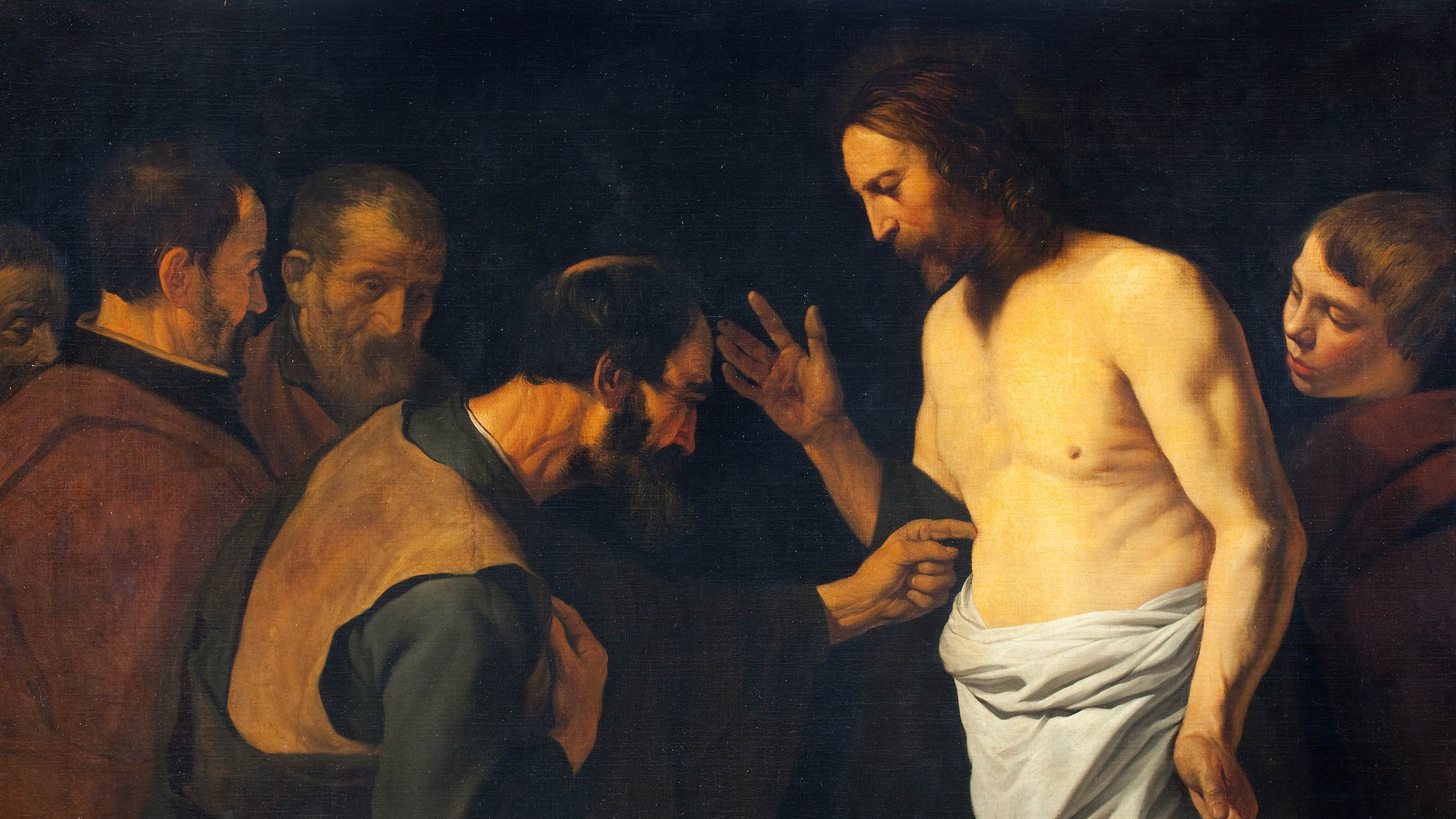
18 Aug Reflections on the Risen Christ’s Appearances
The sense of our Lord’s post-Resurrection appearances throughout the New Testament is intensely paradoxical: we can say, in fact, that their sense is that they make no sense. Now we need to dwell on this impossibility of making sense of what we are shown, rather than try to ignore or overcome it: we need to accept it, even embrace it, and see it as belonging intrinsically to what is being revealed to us.
Consider St John’s Gospel. Jesus stands on the beach, making Himself physically present to His disciples, to all intents and purposes as you and I can be physically present to each other - and yet His disciples do not know Him by way of physical presence; they see Him, He speaks to them, He even eats with them, and yet they do not recognize Him bodily. Mysteriously, here, perception is un-perceiving, the ordinary and familiar paths of knowledge are simultaneously engaged and frustrated, the physical is insisted upon but also strangely transcended, and bodily presence is no longer obvious, incontrovertible, but a kind of hiddenness. And this persists. For when His disciples’ inability to recognize Him is eventually overcome, it isn’t that they suddenly see, in the ordinary way, that this man standing among them, speaking and eating with them, is in fact Jesus, as if a screen or veil is at this point removed that, earlier on, was concealing Him physically. For one thing, it is apparently only John Himself who, in some unspecified way, discerns who the stranger really is: he alone is able to say It is the Lord, which suggests that discerning Jesus here is more like spiritual perception than merely looking at what’s there. Peter, for example, hears and reacts to John’s words, but in a way which suggests that what they convey is a truth which he cannot access directly, but must somehow believe on the basis of John’s unique intuition. The other disciples, too, seem to fall short of John’s insight, inhabiting a mysterious zone of indeterminacy in which, on the one hand, they do not doubt that it is Jesus - we are told they know this - even while, at the same time, they are incapable of confirming it in any straightforward way - they did not dare to ask ‘who are you?’, we are told, as if such a plain enquiry would somehow betray the more mysterious awareness which they have been granted. And, finally, not even John apprehends Jesus in Himself but rather in something else, in the utterly unexpected haul of fish which is the fruit of obedience: for it is only after so many fish are caught, indeed it is only in and through the fish being caught, that the identity of the mysterious stranger, even for John, is suddenly, but indirectly, clarified. The abundance of fish is seen: Jesus, even though He is physically present, isn’t seen, but in some mysterious way is discerned as the one to Whom the abundance is owing.
The whole point here is not to try to resolve the difficulties, but to let them stand. They are a sign to us a sign that something is being given which is beyond us, which exceeds anything we could conceive or produce. The Resurrection, after all, isn’t our work but God’s, and we must let Him act precisely as He wills, even when what He does baffles and defeats us. Of course we like to understand, we even demand it. But instead, as Christ says at the end of today’s Gospel, we will find ourselves taken beyond ourselves, beyond the limits we find tolerable, and be carried where we do not wish to go - beyond our power to comprehend or control. The Resurrection narratives aren’t meant to make sense, in fact it is impossible that they should. If we could see how the Resurrection is possible, then it wouldn’t be the Resurrection that we were being shown; if we thought we could interpret it all in terms of our existing sense of the world, in terms which respected the limits of our present understanding, then we would in fact be failing entirely to apprehend what is being revealed.
Well - what is being revealed? When we read about and meditate on the Resurrection, we are not being shown something which takes place and discloses itself within the world, but rather the world itself is being uncovered in its destiny of being transformed within the Resurrection. The-world-as-it-is cannot contain the Resurrection, because the Resurrection isn’t the present of the world but its future. What the Resurrection reveals is the future as God desires it to be. And for this reason, when the Resurrection shows itself to the world, worldly limits of possibility are necessarily exceeded - exactly as we see in today’s Gospel.
What does it mean, though, to say that the Resurrection is the future as God desires it? It means something like this - In the Resurrection, which is nothing other than the transformation of the flesh of Christ, we are shown, in anticipation, the transformation of all flesh, which means not just human flesh, but the physical, material world as such. According to St John, for example, Christ on the Cross draws all things to Himself, which means that in the single mysterious reality of Cross and Resurrection all things - the whole of creation - will be transformed according to the pattern of transformation inaugurated on Good Friday and completed on Easter Day. There is precisely the same teaching in St Paul, who tells us that the creation waits with eager longing…has been groaning in travail … until now … because the creation itself will be set free from its bondage to decay and obtain the glorious liberty of the children of God. Creation itself, St Paul tells us, has been waiting until now for its destiny to be revealed. And the now to which He refers is the ‘now’ of the Resurrection, the now revealed on Easter Day which, from then until the end of time, works itself out according to God’s redemptive desire to draw all things to Himself in the Risen Christ. In a way, then, Easter Day did not conclude on the day that Christ rose from the dead. The ‘now’ of Easter Day lasts for as long as it takes for all flesh to rise, renewed and transformed, in the Risen flesh of the Incarnate Word.
St Paul elsewhere announces what he calls a mystery, the mystery of a great change, in which perishable nature must put on the imperishable, and … mortal nature must put on immortality. This is precisely the promise of the Resurrection. But until the Resurrection is completed we cannot see or even foresee it, we cannot grasp or anticipate what is promised. That is why our Lord’s Resurrection appearances are so mysterious, and why they have to be. The interaction or intersection of the imperishable with what is still perishable, of the immortal with what is still mortal, unavoidably leads to paradox, a sense of the impossible, for we there encounter that mysterious overlapping of present and future which is so characteristic of the New Testament accounts of Christ risen among us.
St John tells us that it does not yet appear what we shall be, but we know that when He appears we shall be like Him, for we shall see Him as He is. And from this teaching it follows that while we are still un-like Him, while we remain as yet un-risen, we cannot see Him, cannot apprehend the Risen One as He truly is. This is what the disciples discover in the Forty Days in which the Risen Christ discloses Himself to them - and to us - so enigmatically. The enigma, however, isn’t in Him, it’s in the disciples, and in us. It is they, it is we, who are caught, suspended, between the mortality which belongs to the present order of things and the immortality which is the future in Christ. The Risen Christ already fully and sovereignly inhabits the space in which all things are renewed. Indeed in His own Person He is that space, that renewal, for everything is in Him, and He is Himself, as He tells us, the Resurrection and the Life. It is we, the as-yet-unrisen, who are in transition, poised between present and future, incapable of truly apprehending the Resurrection because we cannot, yet, apprehend what is ultimately real.
And yet, like the disciples in today’s Gospel, neither do we fail altogether to apprehend it. For the ultimate reality, the Resurrection, which presently lies beyond our grasp, is nonetheless not another reality, separate and different from the world that we already know; it is a transformation of the world we know - of this very world, just as it will be our very bodies, our bodies here and now, that one day rise again. So there is continuity, and there is transformation. Like the Risen Christ, the future - which is His - is both present and hidden, given and still awaited, it is both now and is also not-yet. This is the condition precisely of Faith and of Hope, in which we await from God the gift of fully receiving what He has already given us. We await the gift of finding ourselves and our world handed to us by the Risen Christ, to Whom everything has already been handed over by the One He calls my Father and yours. And in this, beyond even Faith and Hope, we behold the seal of Love, the Love of the Father by which the Son was raised from the dead, the Love which, in the Risen Son, pledges to raise us too.
By Fr Philip Cleevely, Cong. Orat.

